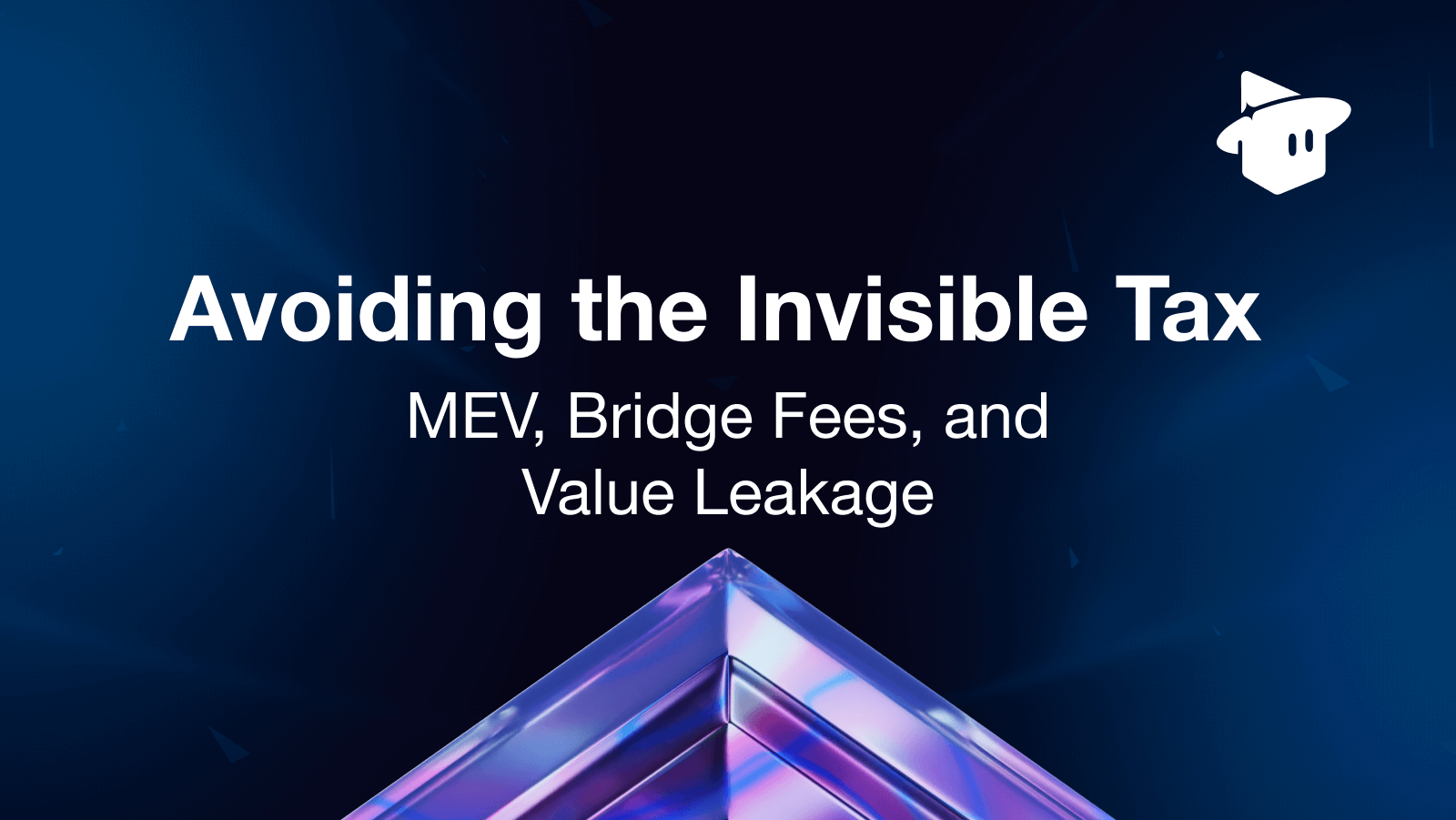
Avoiding the Invisible Tax: MEV, Bridge Fees, and Value Leakage


TL;DR
• MEV on Solana operates without a public mempool, letting the fastest actors with validator access extract value through arbitrage, liquidations, NFT snipes, and priority fee bidding.
• In 2024, validator and searcher MEV revenues surged, with 90M+ arbitrage trades generating $142.8M in profits: value that could have stayed in your app’s economy.
• Bridge fees add 2–5% in costs, break Solana-native composability, and introduce UX friction and security risks.
• Ephemeral Rollups keep orderflow private, eliminate bridge dependence, and preserve Solana’s composability while maintaining high-speed execution.
• Fair Sequencing Services ensure impartial transaction ordering, preventing validator-level extraction and improving fee predictability.
Building a successful blockchain application requires meticulous attention to every detail that affects user experience and economic efficiency. You need to perfect your programs, optimize gas fees, and continuously attract more users. But there's a silent value drain that many developers overlook: MEV (Maximal Extractable Value) and bridge fees are invisibly taxing your application and users. These hidden costs quietly erode the value of your blockchain application, diminishing the benefits your users receive. Understanding and addressing these invisible taxes is crucial for developers aiming to build sustainable and competitive blockchain solutions.
Understanding and addressing these invisible taxes is crucial for Solana developers aiming to build sustainable and competitive products. In this article, we explore two ways to mitigate these hidden costs:
- Integrating Ephemeral Rollups
- Integrating Fair Sequencing Services
Understanding Maximal Extractable Value (MEV): The Invisible Tax on Blockchain Applications
What is MEV?
Maximal Extractable Value (MEV) refers to the maximum amount of value a blockchain miner or validator can make by including, excluding, or changing the order of transactions during the block production process (Source). Originally called Miner Extractable Value, the term has evolved to acknowledge that various actors beyond miners can exploit MEV opportunities.
On Solana, MEV doesn’t follow the same pattern you might see on Ethereum or other EVM chains. There’s no global public mempool where anyone can scan pending transactions. Instead, transactions are sent directly to validators or through private, out-of-protocol mempools such as Jito relays.
This architecture means MEV extraction happens differently. With no public mempool, MEV on Solana is dominated by the fastest actors with direct validator access. Searchers compete in milliseconds, using low-latency infrastructure and validator connections to detect and act on profitable opportunities before transactions are confirmed.
These can include:
- Arbitrage between Solana’s high-speed DEXs like Orca, Raydium, Phoenix, and OpenBook
- Liquidation sniping on lending protocols such as Solend or MarginFi
- NFT mint sniping during hyped drops
- Priority fee bidding wars to push transactions ahead in congested slots
When MEV exploitation occurs, users often pay higher fees or suffer from price fluctuations caused by reordered or intercepted transactions, effectively paying an invisible tax on their everyday activity. On Solana, that tax surged in the last year: Messari’s State of Solana Q4 2024 report showed validator and searcher revenues climbing sharply on MEV tips and trading activity.
The Real Cost of MEV for Blockchain Developers
For Solana developers, MEV’s cost isn’t just about losing a bit of gas efficiency, it’s about the direct value siphoned out of your application’s transactions.
Take a high-frequency DeFi app moving 10,000 trades a month. If each trade suffers an average $0.50 value loss to arbitrage bots or liquidation snipes, that’s $5,000 a month leaking from your user base. In a year, that’s $60,000 that could have gone toward rewards, deeper liquidity, or new features.
And these numbers aren’t hypothetical. According to Helius, in the past 12 months there were around 90.4 million successful arbitrage transactions on Solana, generating roughly $142.8 million in profits for searchers. The single most profitable trade netted $3.7 million. Those profits came from value that could have remained in end-user hands or within your app’s economy.
Because Solana’s execution environment processes transactions in parallel and at extremely high speed, MEV extraction scales directly with transaction volume. The faster your app grows, the more appealing it becomes to searchers, unless you proactively design infrastructure to keep that value where it belongs.
Bridge and Transaction Fees: The Hidden Friction Tax on Multi-Chain Applications
What are Bridge Fees?
Cross-chain bridges enable interoperability between different blockchain networks, but on Solana, they often make less sense. Bridging away from Solana’s high-speed, low-cost execution can:
- Break composability with Solana-native liquidity and programs
- Introduce multi-step user flows that increase drop-off
- Add unnecessary security risk, as bridge exploits have cost billions across the industry
Users often pay between 2% and 5% of their transaction value in bridge fees, gas fees, and slippage. These direct costs reduce effective spending power and discourage frequent use.
Many developers build under the assumption that bridge friction is unavoidable. This leads to multi-chain architectures that are costly to maintain, reduce UX quality, and pull liquidity away from Solana’s composable environment. The combined effect of bridge fees and user friction results in reduced user spending power, higher acquisition costs, and more technical debt.
How Ephemeral Rollups Solve MEV and Bridge Fee Problems and Eliminate Value Leaks
MagicBlock's Ephemeral Rollups offer a way to address both MEV extraction and bridge fee problems directly within Solana.
Ephemeral Rollups are temporary, high-performance execution environments that expand Solana’s capabilities on demand, without creating separate networks or tokens. Anchored to the Solana validator set, they preserve full composability with Solana programs and liquidity.
By creating a dedicated high-speed execution environment that prioritizes your application’s transactions in real time, Ephemeral Rollups prevent MEV bots from monitoring and front-running orderflow.
Transactions never enter a public or private mempool accessible to searchers, closing off the main attack vector for Solana MEV extraction.
Because these rollups remain inside Solana’s execution layer, there’s no need for cross-chain bridges. This removes bridge fees, slippage, and multi-hop experiences, while keeping users and liquidity native. Gas abstraction further improves UX by letting developers optimize costs without exposing users to priority fee bidding wars.
The Role of Fair Sequencing Services in Preventing MEV
Fair Sequencing Services (FSS) introduces a decentralized and impartial process for ordering transactions. Instead of allowing block producers to reorder transactions for their own gain, FSS enforces a first-in, first-out or verifiable fair ordering before submission to Solana.
Fair Sequencing Services operates by collecting user transactions off-chain and establishing a decentralized consensus on the correct transaction order before submitting them to the blockchain. This process ensures that transaction ordering is both fair and transparent, preventing block producers from reordering transactions to capture additional value. By leveraging secure causal ordering and temporal ordering mechanisms, FSS enforces a first-in, first-out (FIFO) approach, which means transactions are processed in the order they are received.
For Solana developers, this means:
- Transactions are processed as intended, without validator-level extraction
- The benefits of blockchain execution are preserved for the app and users
- Predictability in transaction ordering and fees
Best Practices for Blockchain Developers: How to Eliminate Hidden Costs
- Audit Value Leaks
- Compare transaction execution prices against expected market prices to estimate MEV impact
- Track total costs for cross-chain actions, including fees and slippage
- Identify friction points caused by bridging or poor execution quality
- Consider Infrastructure Solutions
- Deploy Ephemeral Rollups to keep orderflow private and eliminate bridge dependence
- Integrate Fair Sequencing Services to prevent validator-level reordering
- Optimize program design for Solana’s runtime to reduce fees and latency
- Design for Value Retention
- Keep users in Solana’s ecosystem whenever possible
- Maintain composability with Solana-native liquidity and programs
- Focus on delivering value to users rather than extracting it
The Future of Blockchain Application Development
Why Eliminating Hidden Costs Matters
Leading blockchain developers recognize that MEV and bridge fees are not unavoidable expenses, but rather architectural challenges that can be addressed. Every dollar lost to MEV extraction or bridge fees reduces user engagement and the potential for application growth.
By eliminating these invisible taxes, developers can enhance user experience, improve network security, and foster a healthier decentralized finance ecosystem.
Building Sustainable Blockchain Applications
MagicBlock’s infrastructure, with Ephemeral Rollups, offers a foundation for building high-performance, real-time blockchain applications that retain value and optimize economics. This approach enables developers to focus on innovation rather than battling hidden costs.
The critical question for blockchain developers today is not whether they can afford to eliminate these hidden costs but whether they can afford to continue losing value while competitors adopt more efficient architectures.
Key takeaway: On Solana, every transaction is an opportunity to protect or lose value. The right architecture keeps it in your hands.
Interested in building on MagicBlock? Visit our developer resources to discover how Ephemeral Rollups can enhance the value retention and performance of your blockchain application.





